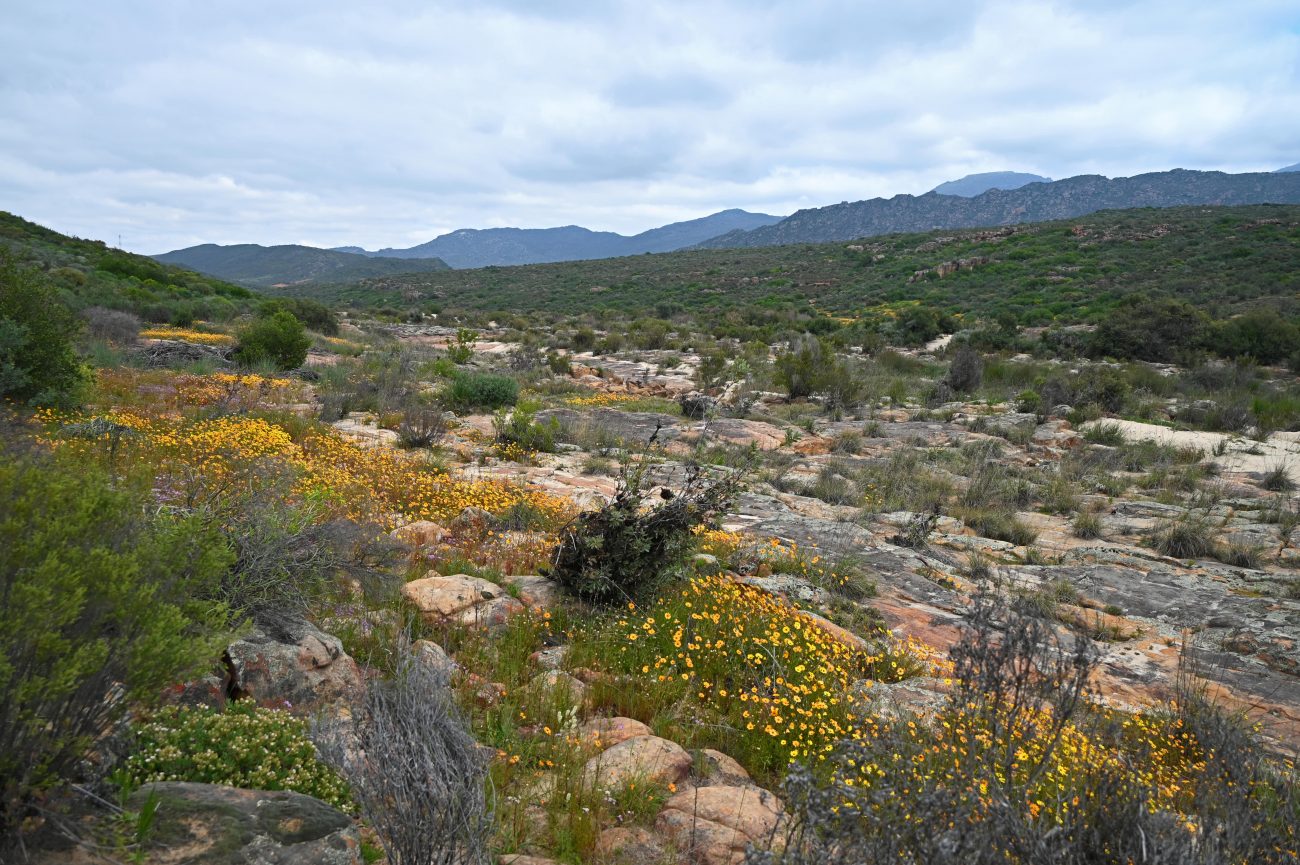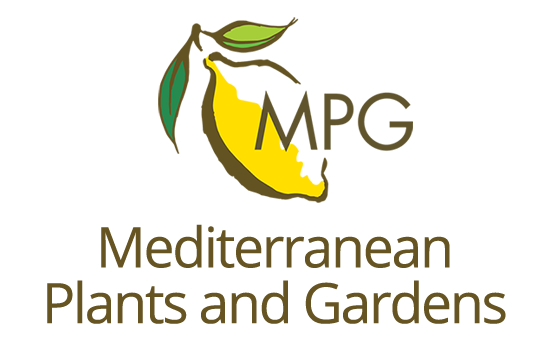Day 2 – Friday 15 August
Cape Town – Maskam
We started our search for wild plants at Rondebosch Common, just a short walk from our hotel and a popular green space in the city. But it is also some of the last remnants of Cape Flats Sand Fynbos and Frank hoped we might find a few botanical gems whilst they were still in flower. This included Lachenalia quadricolor, which had now faded (but we were lucky to see elsewhere later in the tour).

Rondebosch Common

Lachenalia quadricolor

Pelargonium triste, the night-scented pelargonium
It was time to leave the city and head north. In the verges we saw multiple small heaps of soil, which are the work of mole rats. There were also many wattle trees, which were brought in from Australia to stabilise the soil but have become invasive. They are hard to eradicate as plants sucker from the base if cut or burnt, so a gall has been introduced to help kill the trees.
Frank explained to us the environments we would be visiting. This would include the Fynbos biome, an evergreen hard-leafed shrubland that occurs on acidic, nutrient poor, course-grained soils, particularly soils derived from heavily-leached sandstones and limestones. Fynbos rarely develops where droughts are common or where annual rainfall is less than 400mm. We would also see Renosterveld vegetation that once covered large areas of the coastal forelands and intermontane valleys in the south western Cape, but much has been cleared for agriculture. The renoster shrubland is also an evergreen, fine-leaved vegetation type, dominated by the shrubby renosterbos (Elytropappus rhinocerotis, Asteraceae.) It replaces fynbos on richer soils with higher pH, rainfall of 600mm, is less fire prone and is renowned for its bulbs and Asteraceae. The name means rhino field, as once black rhino grazed its daisy bushes. Further north we would explore the Namaqualand Kilpkoppe or Namaqualand Hardeveld, an escarpment about 50km wide characterised by round, rocky granite hills with sandy plains between. We would also visit the quartz-pebble areas of the Knersvlakte. Frank and our friends in Cape Town said it had been a particularly wet winter, so we were hopeful that this would bring a good flower display, even though we were visiting early in the season.
After leaving the suburbs we drove through agricultural land, some of which was sheeted with swathes of plastic. We saw orange groves, which along with mangoes, are an important crop in this area. On reaching the western edge of the Cederberg Mountains, we turned off the main road onto a track that ran alongside the Oliphants River, so named because elephants once lived in this area, but today the vegetation doesn’t offer sufficient food. Frank knew where we would be able to find some local specialities and, as would become a frequent activity on the trip, we stopped on the side of the road to discover a plethora of flowering plants growing in friable, very sandy soil. Plants here included Laperousia pyramidalis, a plant which Frank advised that we wouldn’t see again during our travels and our fist sighting of Babiana, attractive plants in the iris family with sword-shaped leaves. The genus name means ‘little baboon’, from the observation that Chacma baboons eat the corms.

Oliphants River

Lapeirousia pyramidalis

Babiana ambigua

Babiana ambigua
We stopped several times along the track, discovering a dense concentration of Lachenalia mutabilis and an area with multiple Albuca canadensis.

Lachenalia mutabilis

Albuca canadensis

Moraea amabilis

Gladiolus venustus

Sparaxis metelercampiae
At lunchtime we visited Clanwilliam, a small town where the majority of rooibos (Aspalathus linearis) is processed. This native plant in the Fabaceae family only grows around the Cederberg Mountain area in the Fynbos biome and Frank told us that demand outweighs supply.
Lunch was at a charming guesthouse, the Yellow Aloe. Chairs and tables dotted the pretty garden which was brought to life by noisy Cape weaver birds making their downward-opening nests from grasses whilst small lizards darted around the walls.

Yellow Aloe guesthouse, Clanwilliam
After lunch we took another track northwards, again stopping frequently to observe plants on the roadside. This included Massonia depressa, a geophyte with two large opposite, egg-shaped fleshy leaves that grow flat on the ground, between which emerges a low cluster of tiny white flowers with reddish stamens.

Massonia depressa

Didelta spinosa, a locally common shrub
As we drove on Frank said that the Cederberg Mountains are an overlap of the Fynbos biome and the Succulent Karoo biome and from now on, we were entering the Succulent Karoo. This biome spans from Luderitz in Namibia in the north, through Richtersveld, Namaqualand, Hantam, Tanqua, Roggeveld to the Little Karoo in the east. The biome has a complex geology, mostly shales. The climate is mild with a maritime influence, with average rainfall of 100-200mm per annum, mostly in winter. The biome has around 6530 species of plants, 40% of which are endemic. Many species occupy specific habitat niches. We could see the change in flora, with more dwarf and succulent plants. For example, under a grey, late afternoon sky the glistening white flowers of Monilaria monolifolia in the family Aizoaceae stood out against the red, very stony soil. Plants in the Aizoaceae family are known as vygies in South Africa, meaning small fig, referring to the fruit capsule. We also found our first Ferraria of the trip, deciduous perennial herbs with complex-looking flowers in the Iridaceae family. This Ferraria ferrariola was at its southern range which is Namaqualand to the north and Clanwilliam to the south. Plants flower for two weeks but each flower opens for 2-3 days.

Ferraria ferrariola

Monilaria monilifolia

The landscape on the way to Maskam
Our accommodation for the next few nights was at a the remote Maskam Guest Farm, located on a plain beneath the imposing Gifberg, or Poison Mountain. We stayed in scattered cabins and met for an evening meal of traditional home-cooked food, prepared by our host Amanda. As the sun set a chorus of frogs competed with the increasingly familiar calls of the Cape weaver, both making their home around a small lake.

